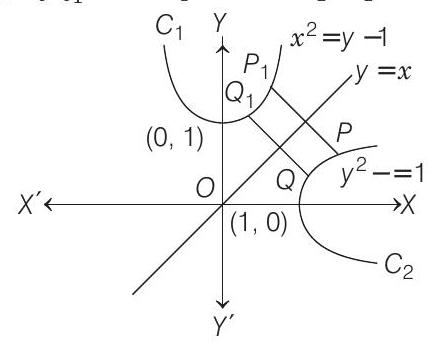####46. Let and be respectively, the parabolas and . Let be any point on and be any point on . If and is the reflections of and , respectively, with respect to the line . Prove that lies on lies on and . Hence, determine points and on the parabolas and respectively such that for all pairs of points with on and on .
Show Answer
Answer:
Correct Answer: 46.
Solution:
- Let coordinates of be
Reflection of in is
which clearly lies on
Similarly, let coordinates of be
Its reflection in is
, which lies on .
We have,
Also both perpendicular to

Thus, is an isosceles trapezium.
Also, lies on and lies on , then
Let us take
[say] we have,
Now,
Also, for
and for
Thus, is least when .
Corresponding to , point on is and (which we take as ) on are . Note that for all pairs of with on .







